7 Tips and Tricks for Eye-Catching Window Design
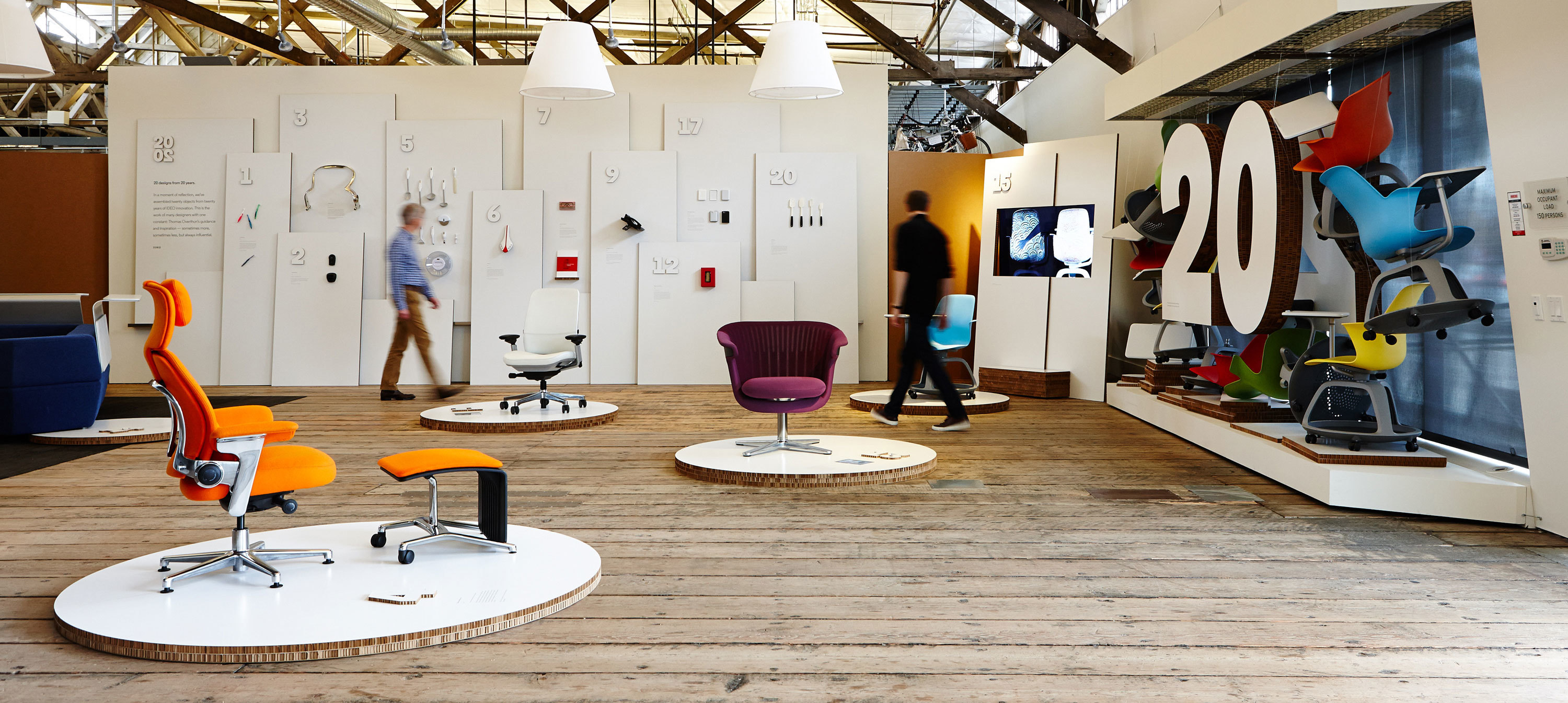
When the IDEO San Francisco studio moved its office to Pier 28, we landed a whole new design challenge: a massive, floor-to-ceiling front window along the Embarcadero. For the first time, we had a public display case to highlight our events and projects, and we had to figure out how to best activate it, while sticking to some pretty strict rules.
Since we moved in, Andy Deakin and I have teamed up to build out our displays. As industrial designers, we’re not trained in the art of window displays, but we’ve developed our own principles, drawing on our work creating physical exhibits or immersive experiences—and the rules set by the Port Authority.
Unlike traditional window fronts, ours comes with an elaborate set of constraints. The building is owned by the Port Authority of San Francisco, which has strict guidelines for what can be put on display. No direct advertising, no big logos, and nothing that looks too much like retail. The location also presents its own challenges: We have to create something strong enough to compete with the towering Bay Bridge above, and the bright sunlight along the Embarcadero. And every design has to do double duty—it needs to have meaning for people walking by on the street, as well as our coworkers and clients inside the building.
Our latest window design centers on a new line of cycling bags IDEO created with Brooks England. This time, the biggest challenge was showing off the gear without making the window feel too much like a store. We pulled inspiration from displays and exhibitions we admired, then brainstormed and sketched different iterations as a team before landing on the final concept: a bright yellow bike strapped with a mountain of boxes, which act as shelves for the bags to perch on.

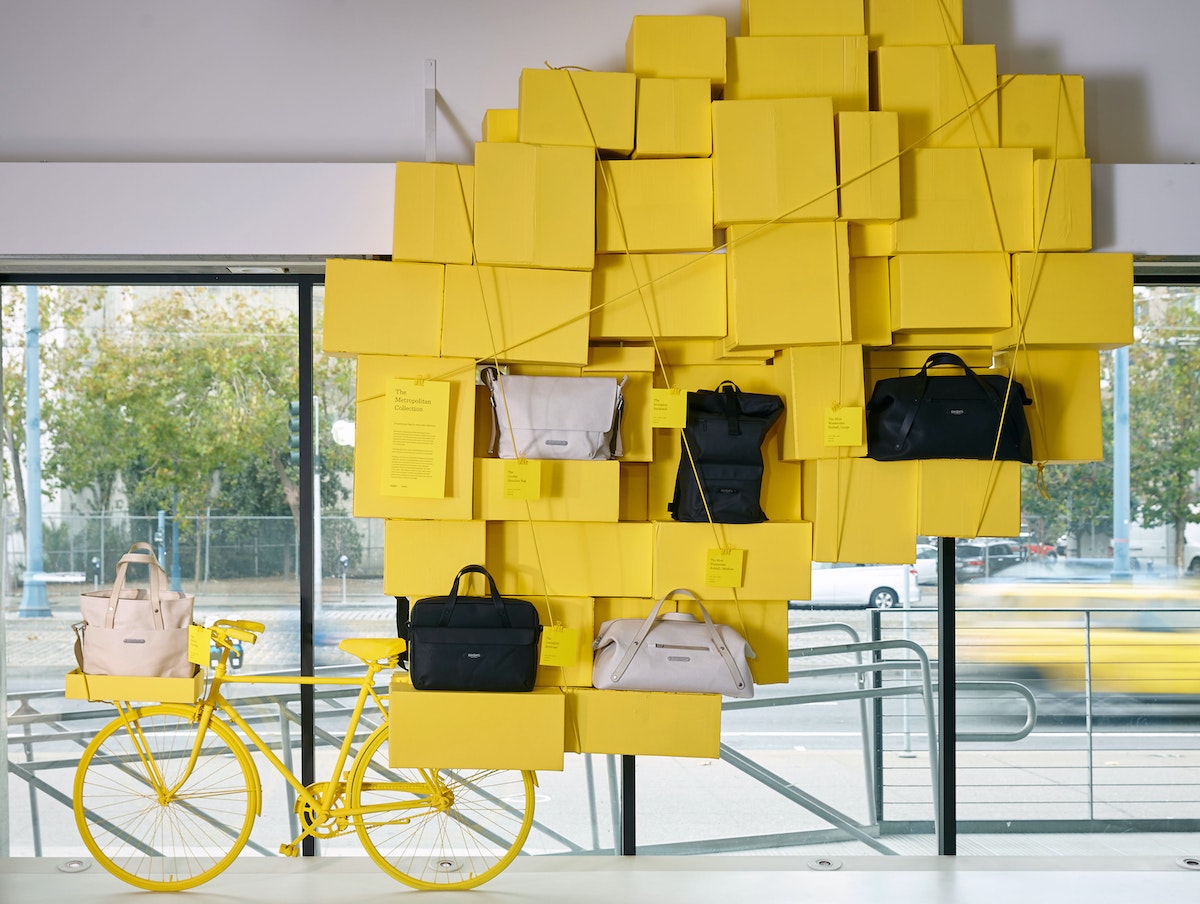
Here are our seven rules for window design.
1. Set the Focus
What is the central focal point of the visual story you’re telling? Distinguish between primary elements and stage-setters. Try using only one material throughout, or in the case of the Brooks window, dip everything in one color to simplify the backdrop and create a neutral stage for the centerpiece—the bags.
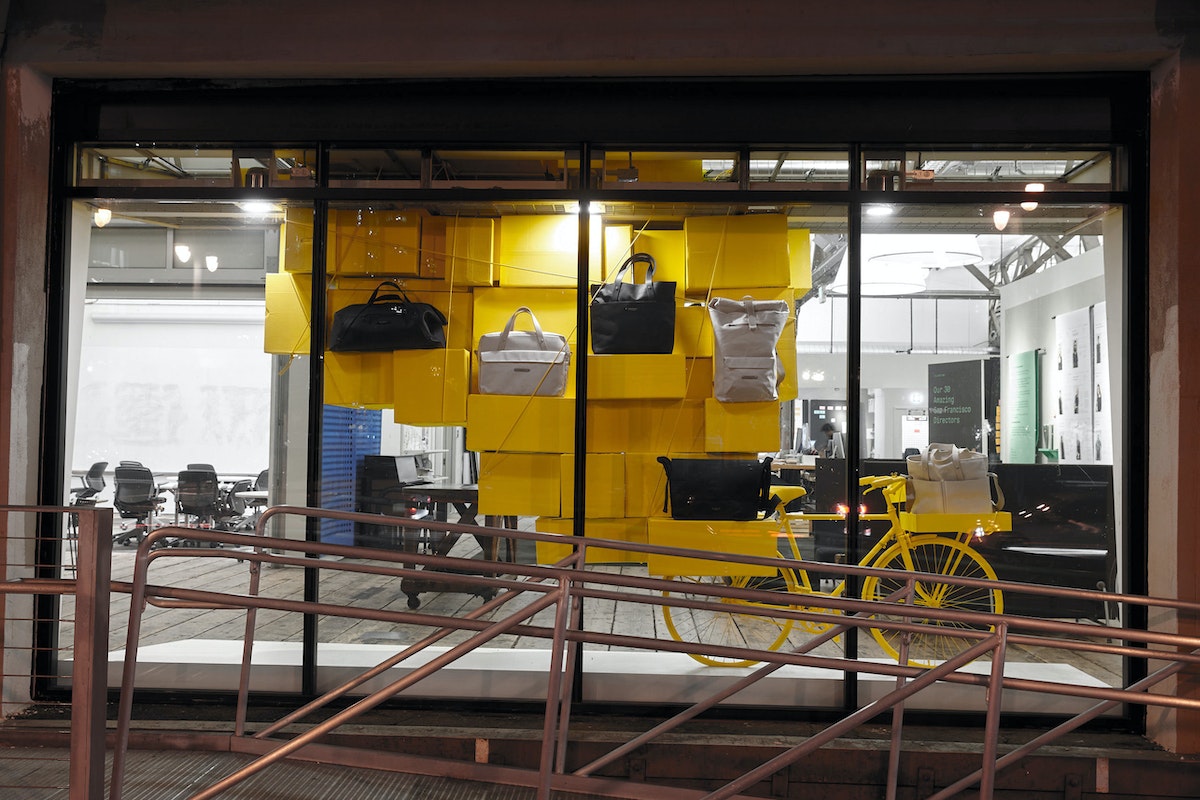
2. Exaggerate Scale
Playing with scale helps create a big impact—especially if you want to amplify small objects to fill an entire window. We loved the Selfridges window display of giant flowers for the Apple watch, and employed this trick when we built a display for the launch the launch of Tom and David Kelley’s Creative Confidence. For that project, we created a six-foot-tall stack of books to fill the window.
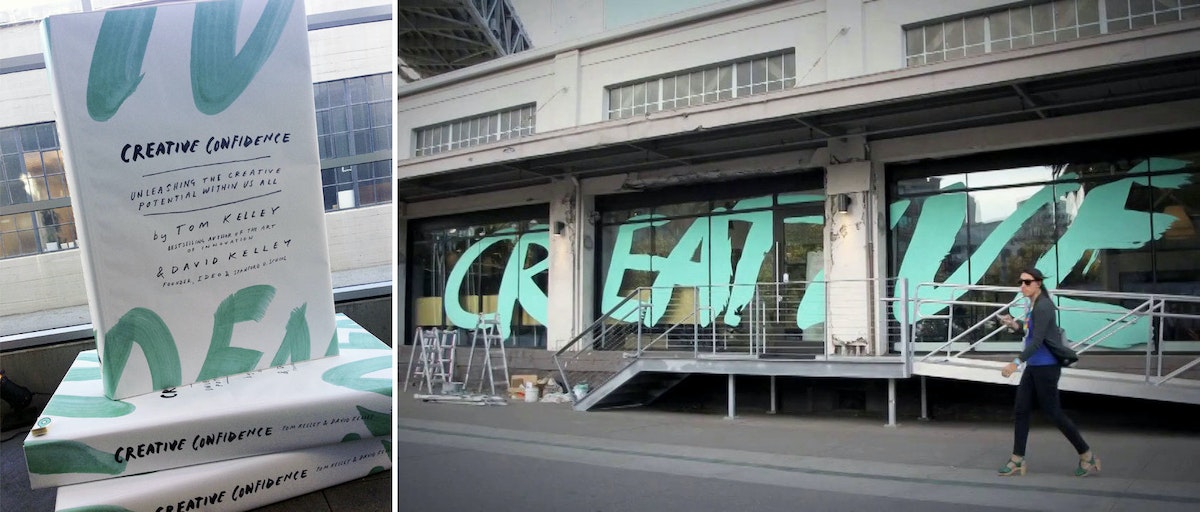
3. Repeat a Theme
Whether it’s boxes, sticks, chairs, or lightbulbs, selecting one item and repeating it to completely fill the space is a simple trick to create an impressive sense of complexity. Aesop is a master of this and we’ve borrowed the technique for numerous exhibits.
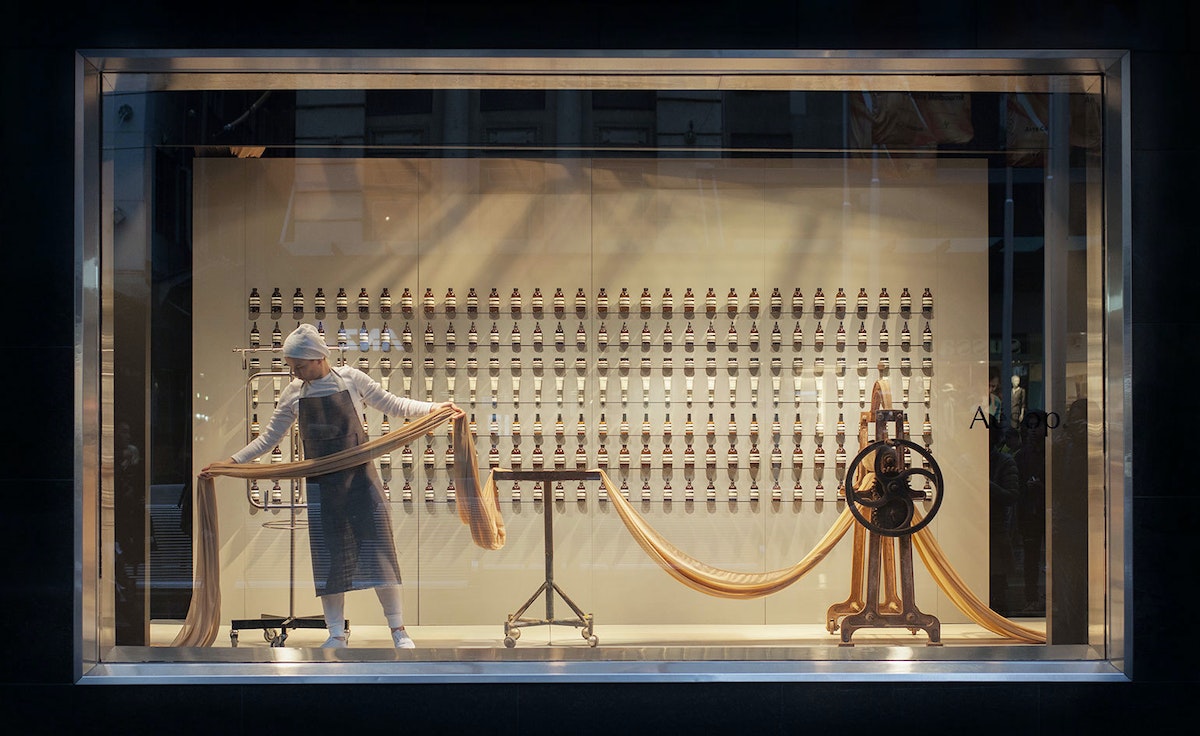
4. Create Depth
Many windows create the illusion of depth when they’re actually quite two-dimensional. Using layers and forced perspective—similar to the tricks of theatrical set design—helps to draw the viewer in. Thomas Brisebras’ MAKE installation was a great example. Seemingly random floating sticks transformed into the word MAKE as you walked past the window. His was certainly the most Instagrammed window we’ve created so far.

5. Add Momentum
When they're composed in a particular way, static compositions can feel almost like they are in motion. Objects can be suspended in midair or positioned to make it seem like they're flying through the scene. When we created our 2020 event window, we installed multiple Steelcase Node chairs to give the impression they were jumping in the air.

6. Design for Duration
Our window budget often limits the types of materials and construction methods we can use. But keeping the duration of the display in mind can help guide the choice of materials. If it is only intended to last for a few weeks, exploring what you can do with cardstock might make the most sense. Unionmade, a San Francisco store, does a nice job of repurposing everyday objects and designing with lo-fi materials to suit their quick refresh rate.

7. Above All, Entertain
And don’t forget inject some play and humor into the mix. Watching people on the street look up and get the joke is half the fun.
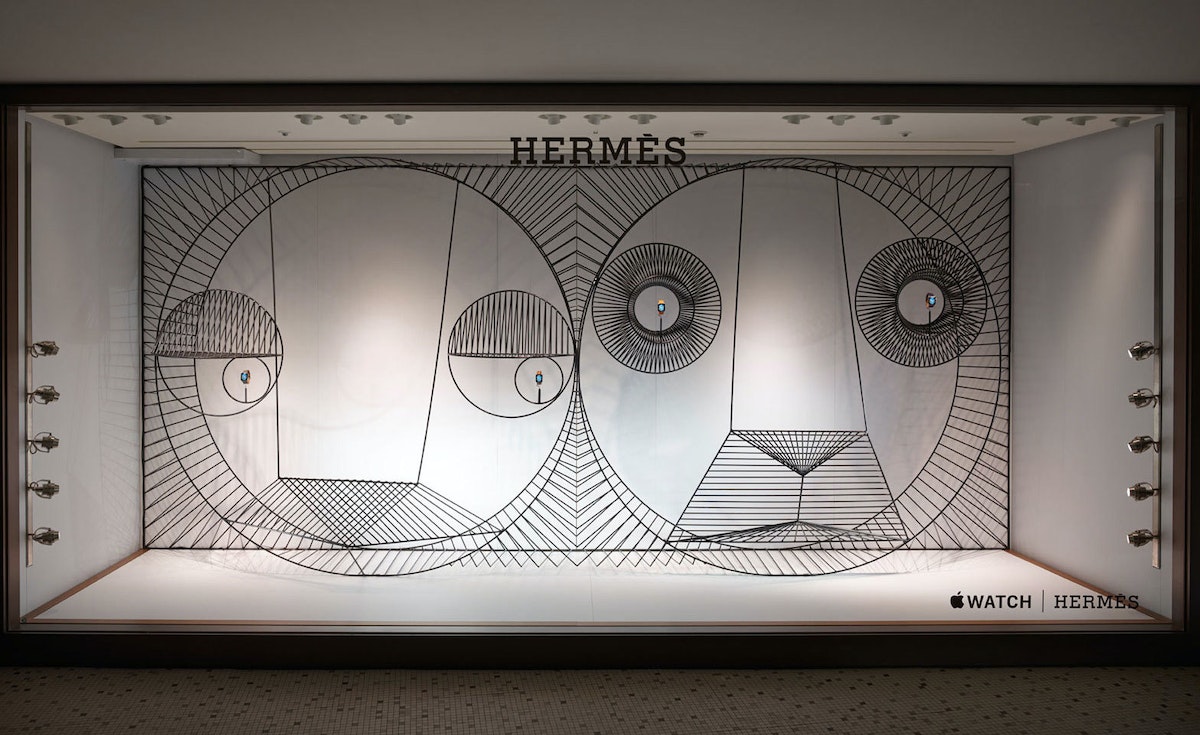
Words and art
Subscribe

.svg)







